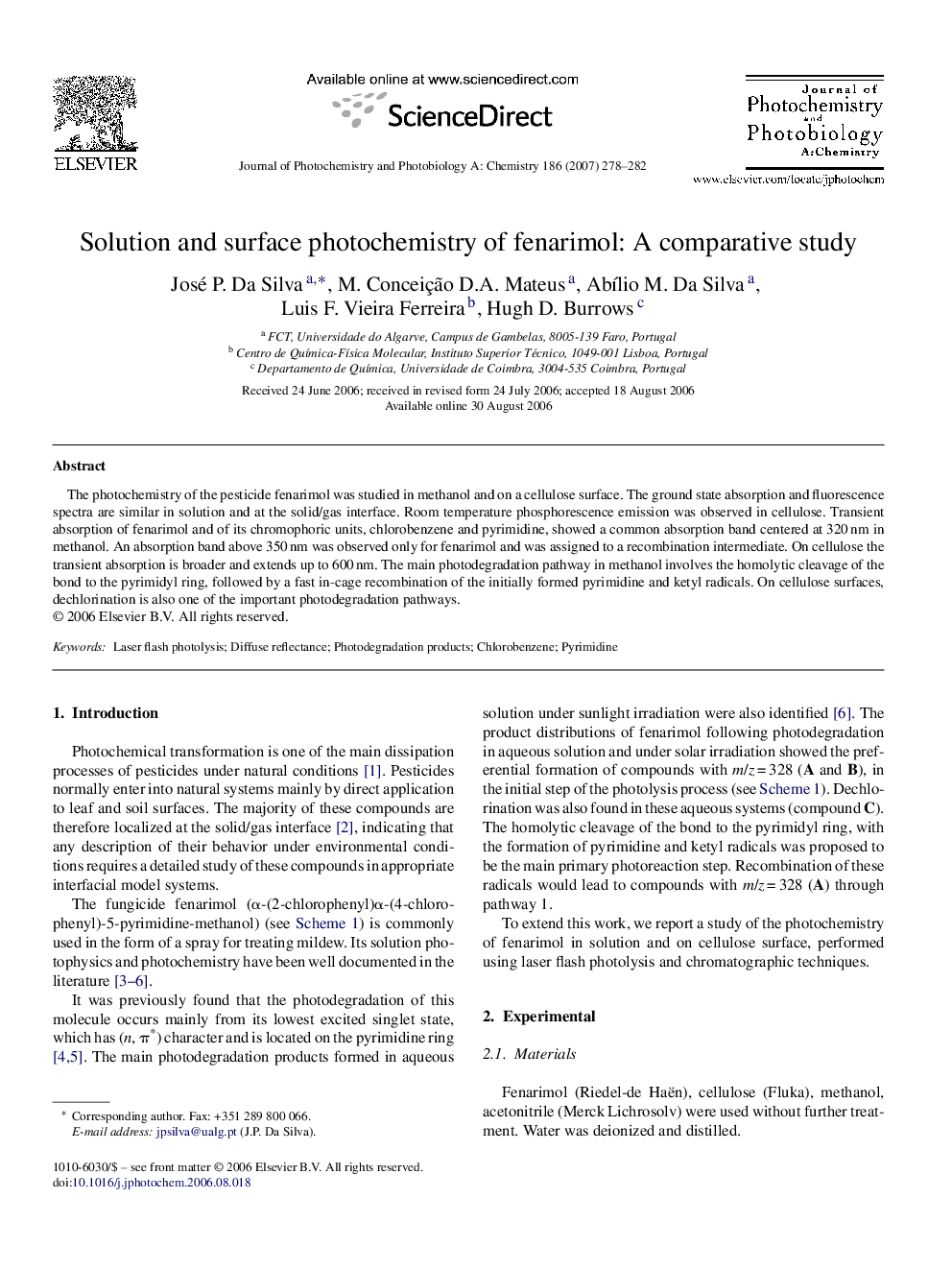| Article ID | Journal | Published Year | Pages | File Type |
|---|---|---|---|---|
| 28360 | Journal of Photochemistry and Photobiology A: Chemistry | 2007 | 5 Pages |
The photochemistry of the pesticide fenarimol was studied in methanol and on a cellulose surface. The ground state absorption and fluorescence spectra are similar in solution and at the solid/gas interface. Room temperature phosphorescence emission was observed in cellulose. Transient absorption of fenarimol and of its chromophoric units, chlorobenzene and pyrimidine, showed a common absorption band centered at 320 nm in methanol. An absorption band above 350 nm was observed only for fenarimol and was assigned to a recombination intermediate. On cellulose the transient absorption is broader and extends up to 600 nm. The main photodegradation pathway in methanol involves the homolytic cleavage of the bond to the pyrimidyl ring, followed by a fast in-cage recombination of the initially formed pyrimidine and ketyl radicals. On cellulose surfaces, dechlorination is also one of the important photodegradation pathways.
